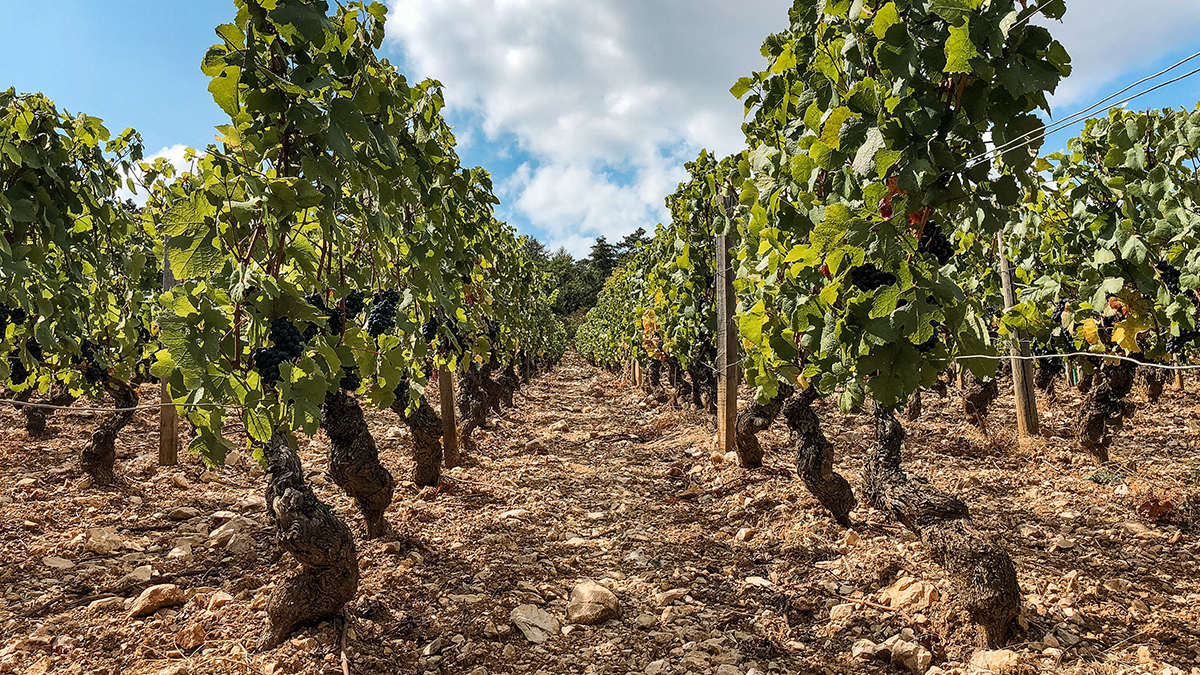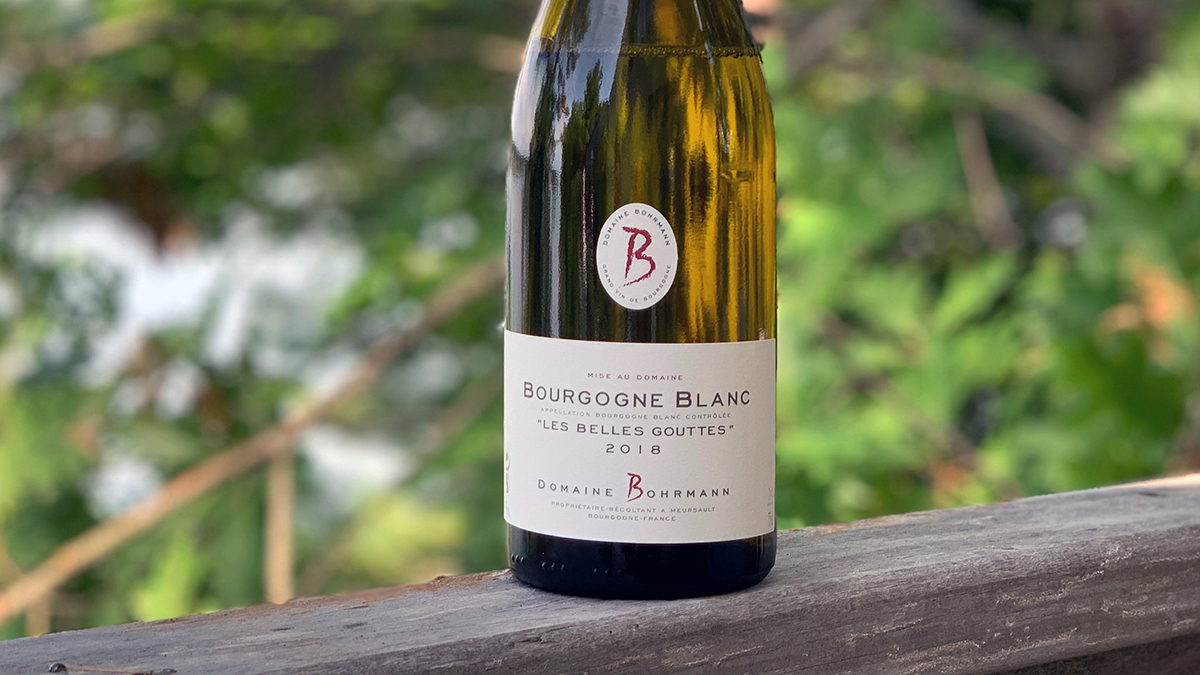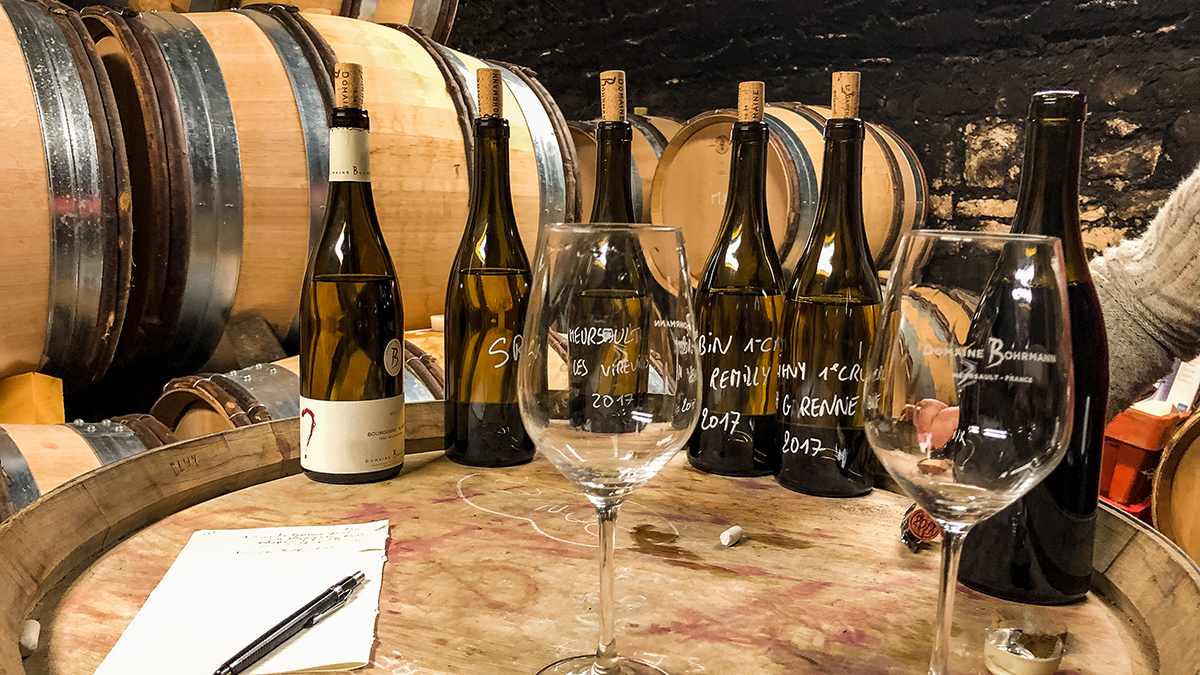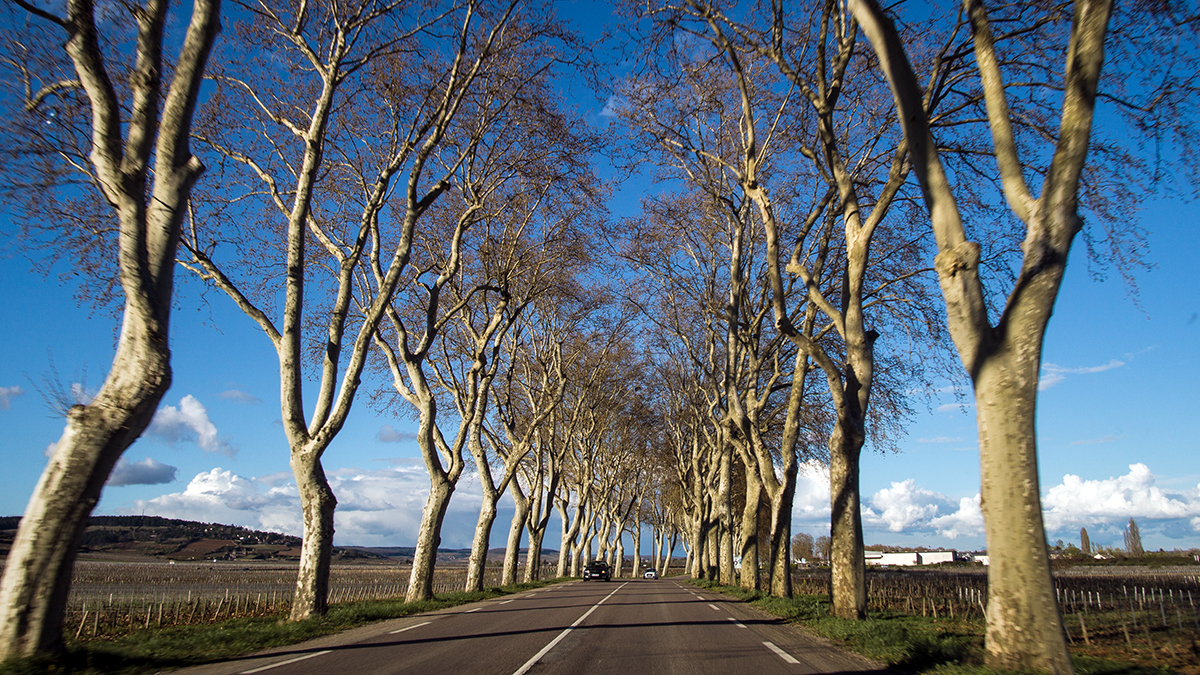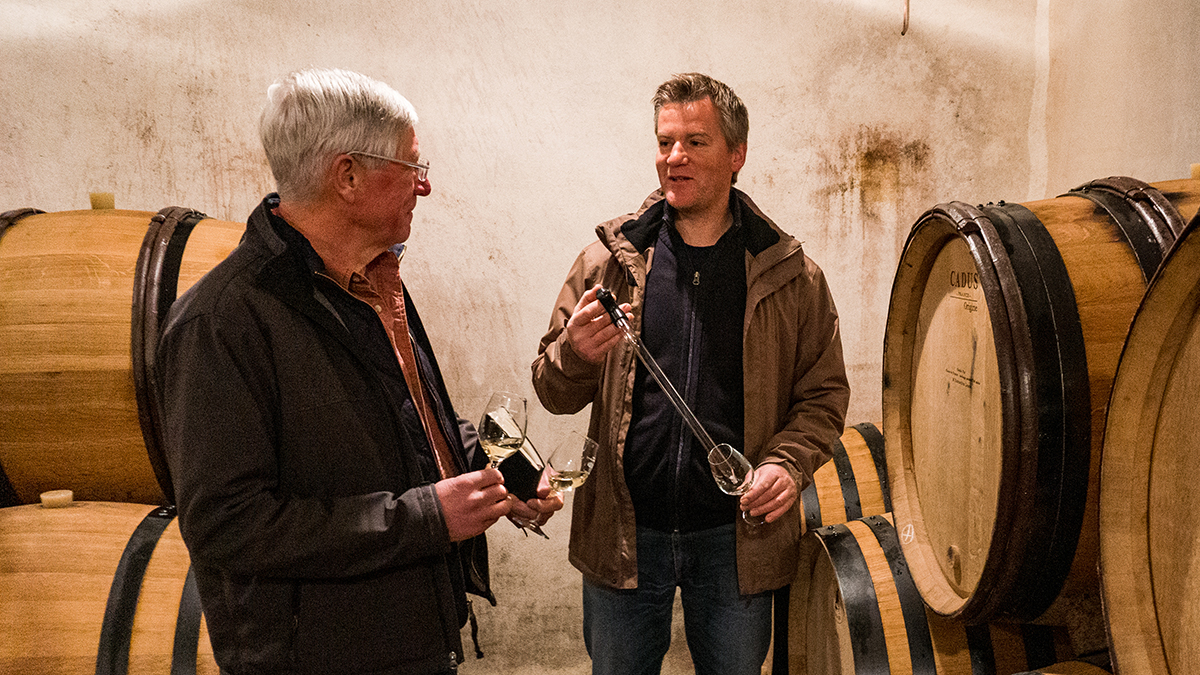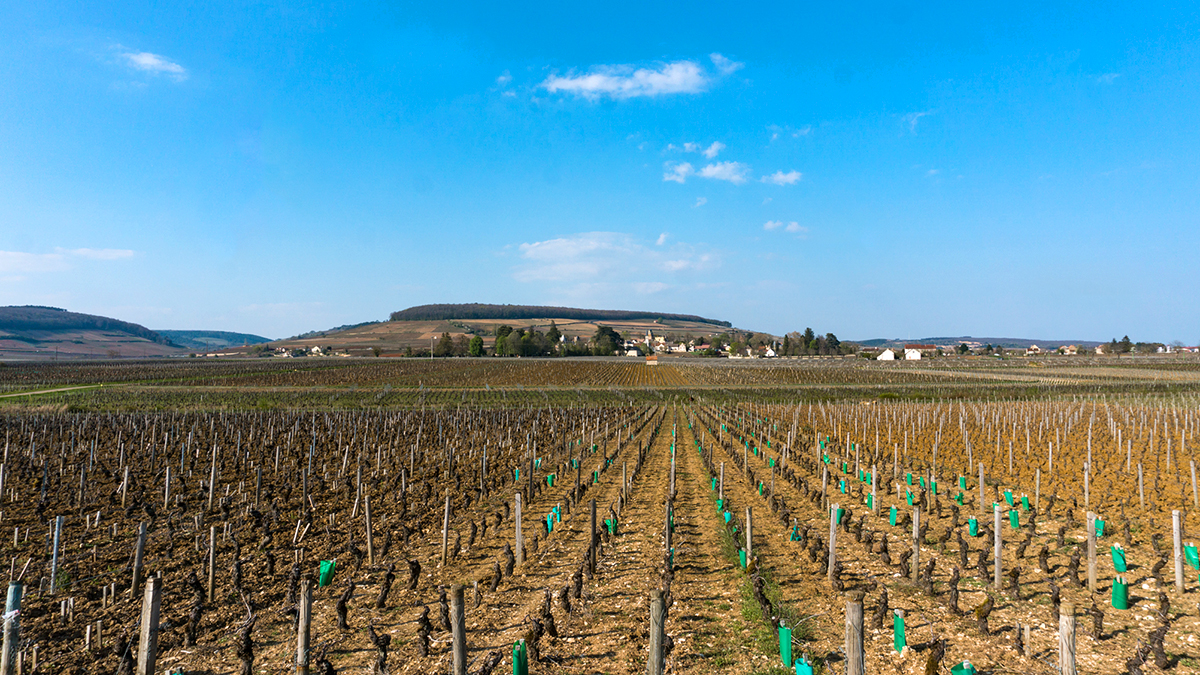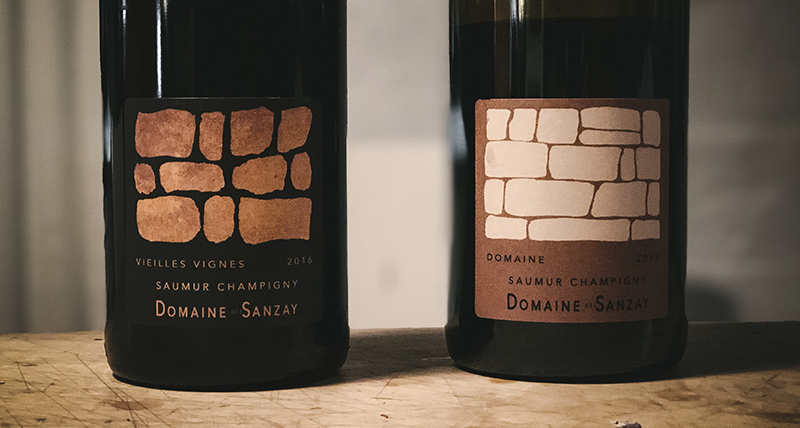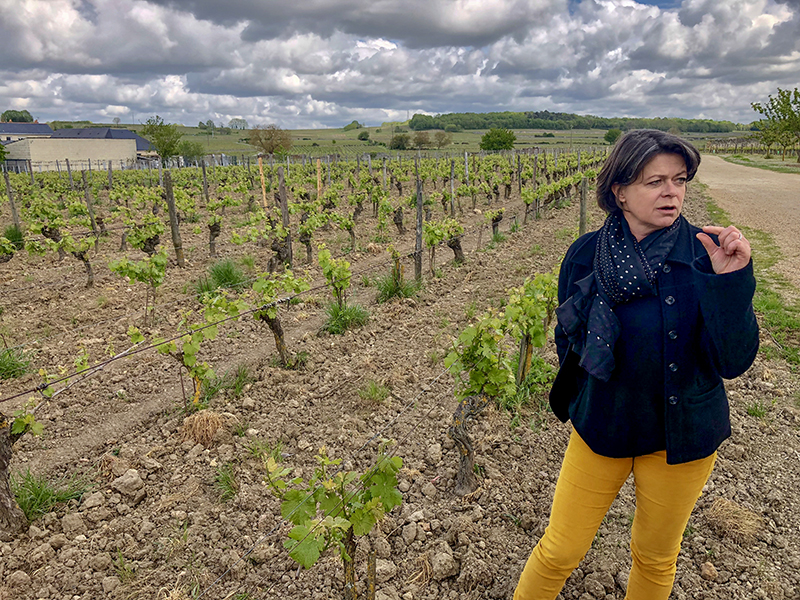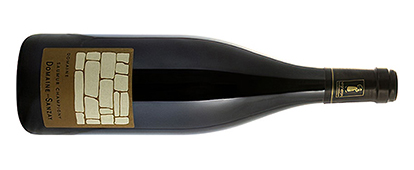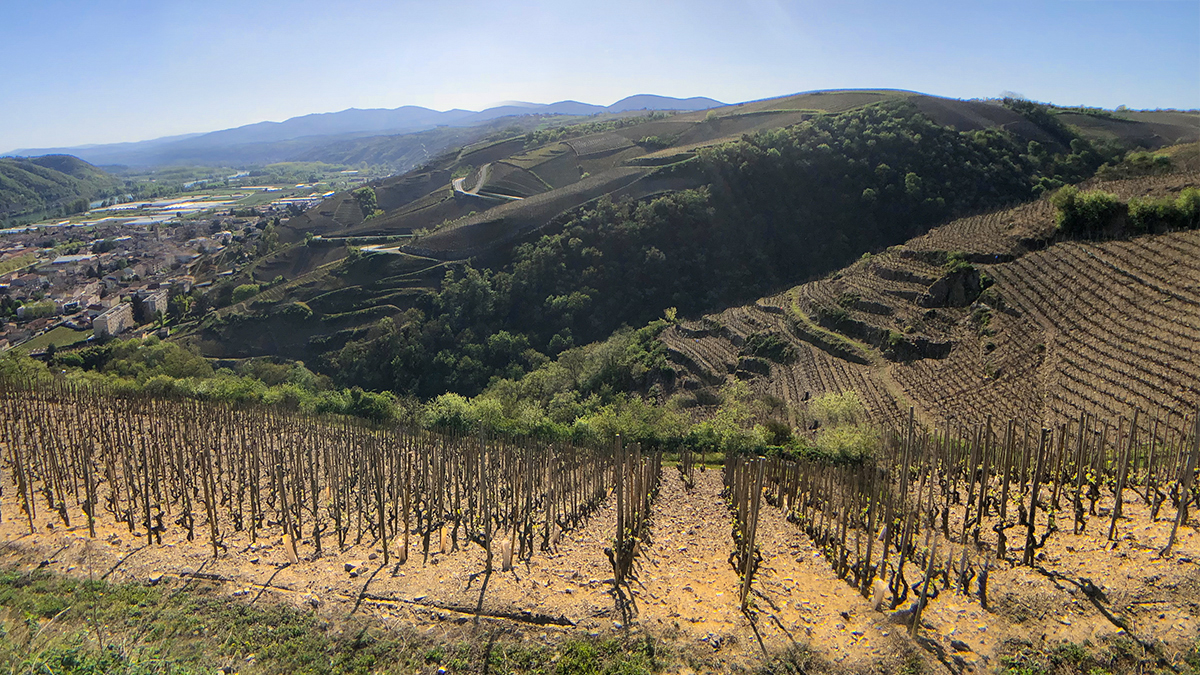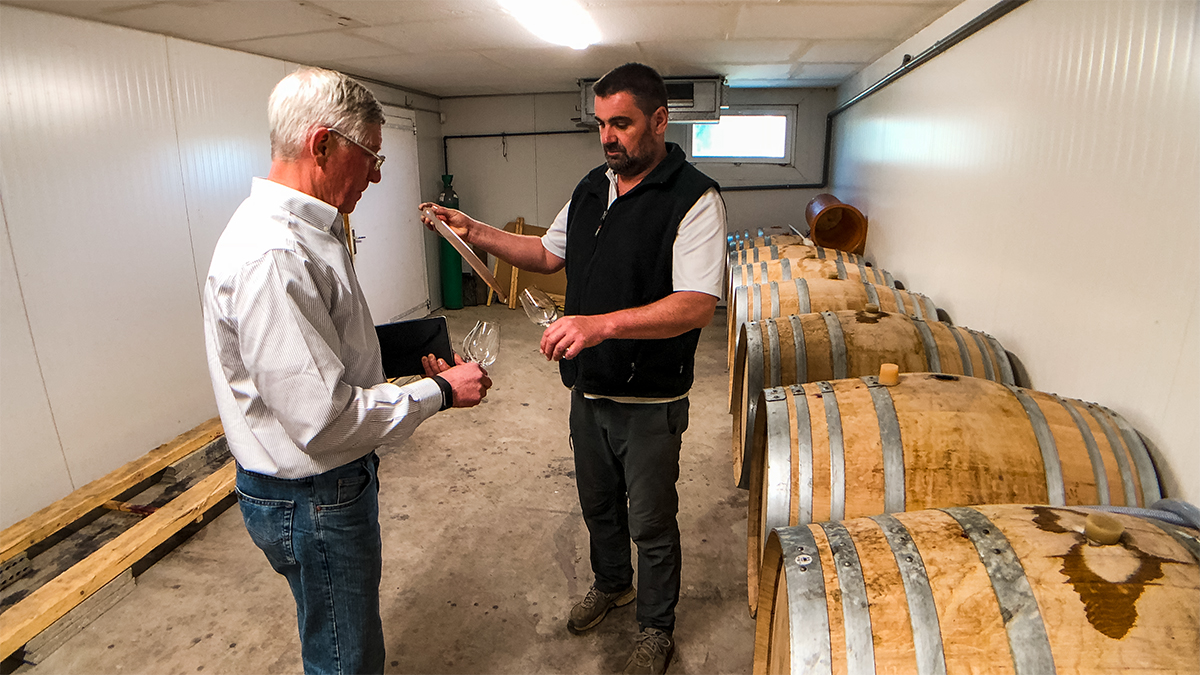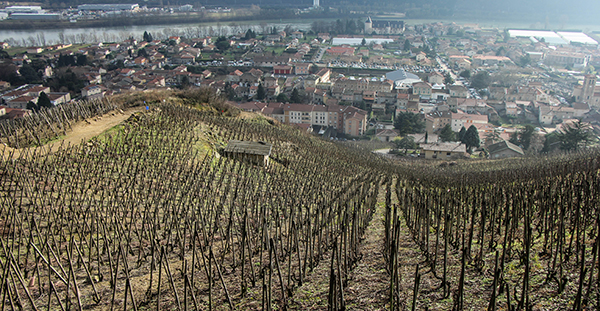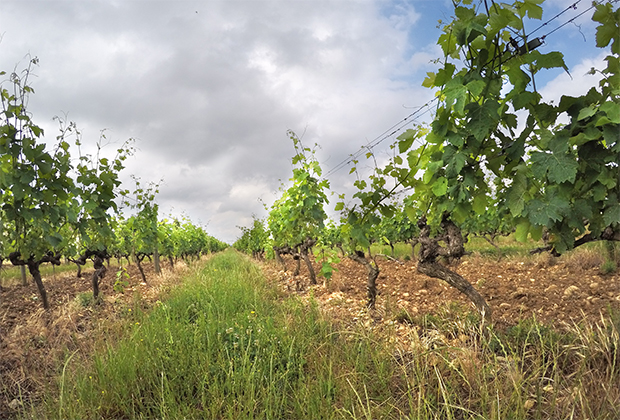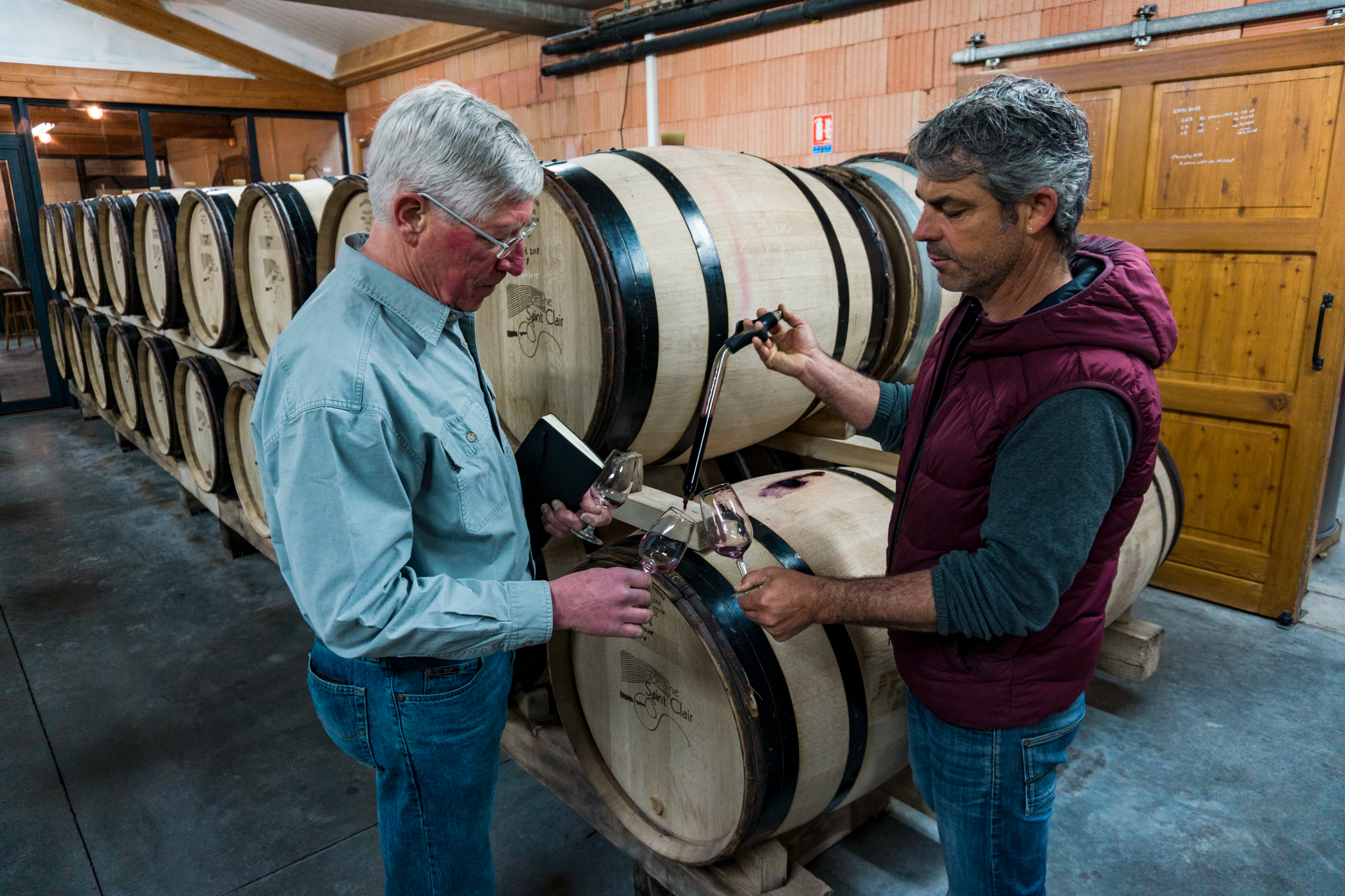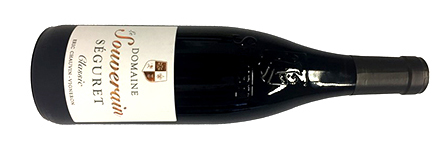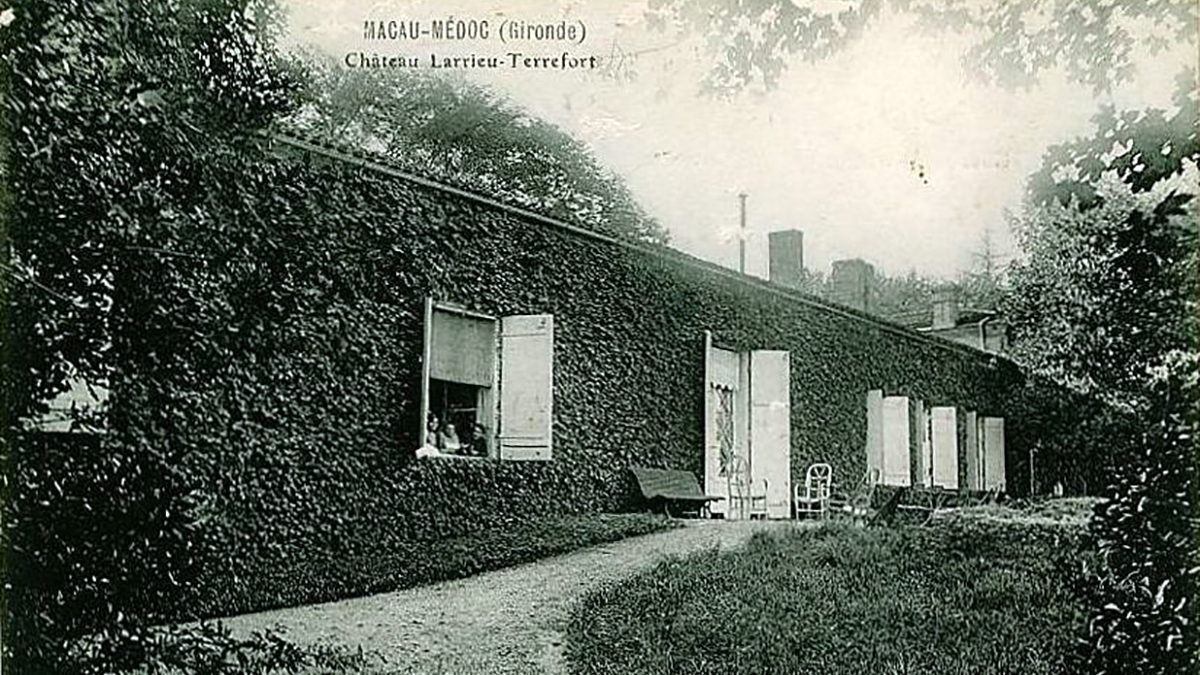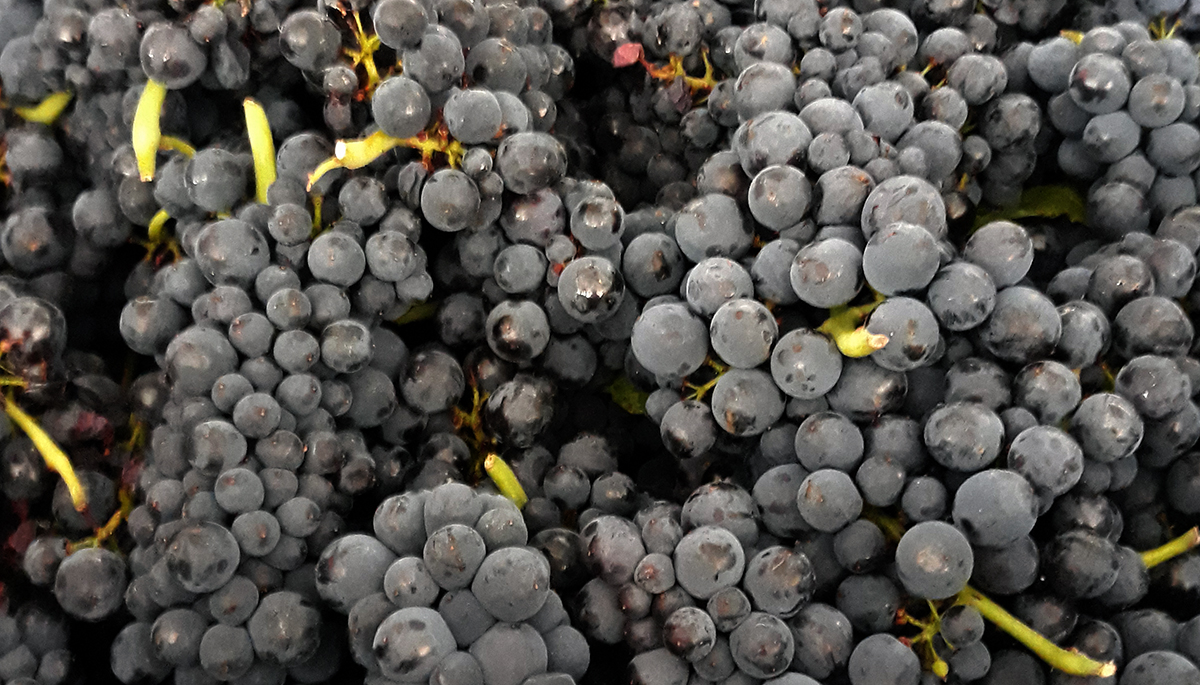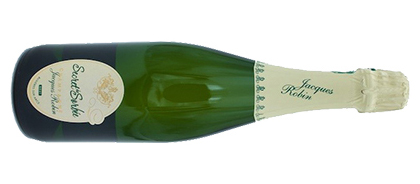The Jura is only about an hour east of the Côte d’Or, but it is an alternate universe, with its own traditions in grapes, in winemaking techniques, and even in bottle size. In Burgundy one descends to the cellar to taste the unfinished wines; for the Jura’s most distinctive wines one ascends to the attic. In Burgundy the vignerons carefully top up the barrels throughout elevage to keep out oxygen; in the Jura’s attics there’s an airspace at the top of the barrel to encourage the development of a veil of yeast. We could go on, but the point is that the wines of the Jura are different. We love all sorts of wines, and drinking those outside the usual list from time to time enhances our appreciation of the whole range.
Our source in the Jura is the Domaine Ligier in the town of Arbois. Our first suggestion there the 2018 Poulsard, a red wine that somewhat resembles a dark, orange-tinged rosé. The nose is just as unusual, combining notes of herbal honey with red currants, dusty cherries, and smoke. The mouth is crisp, lightweight, and seriously refreshing — serve with pizza this fall, and if there’s any left by spring, drink it by the pool.
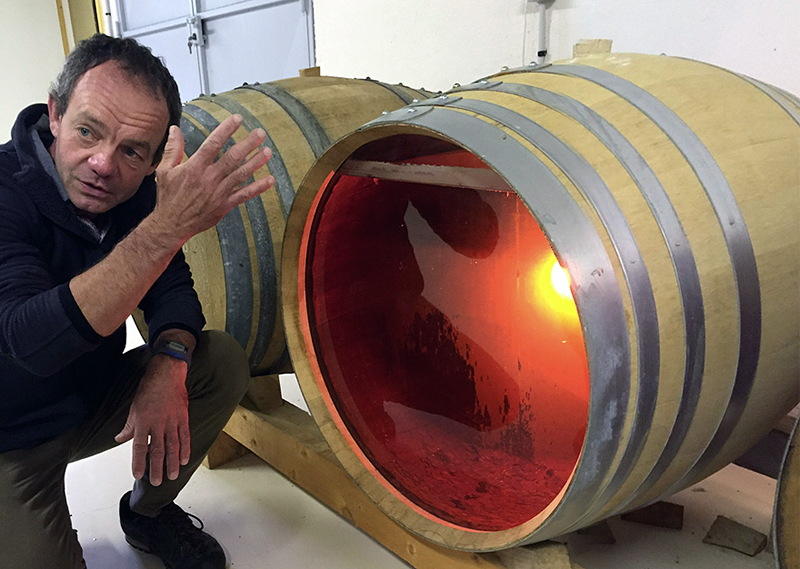
For truly red wines, Ligier’s 2017 Trousseau from the Arbois appellation is a bit more polished. Trousseau isn’t all that different from red Burgundy — its fruit resembles a rustic pinot noir. The 2018 is nicely ripe and medium bodied, with dark cherries, some floral notes, and a touch of toast. After some time in the bottle the wine picks up meaty notes of game. This wine is a good choice for a picnic or any venue where the purpose is refreshment rather than profound reflection.
The whites from the Jura are even more strikingly different, and we’re excited to offer three from Ligier. Here the starring grape is Savagnin. Just like a Spanish sherry or madeira, Savagnin develops its distinctive flavors through slow oxidation in those attics, under a protective veil of yeast. In fact, a fino sherry is the closest thing we know to a dry savagnin. If you like fino, you will like this wine; if you don’t, you might not. As an introduction to dry savagnin, we suggest Ligier’s Arbois “1001 Nights” 2016, a blend of 70% veil-matured Savagnin and 30% Chardonnay. It has the same dry nuttiness as a fino, but the dose of Chardonnay rounds the wine out and broadens its appeal. Look for notes of hazelnuts, dried apple, and toast.
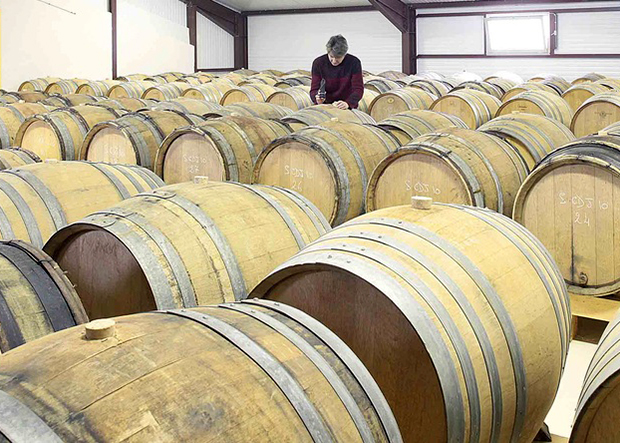
Vin Jaune represents the highest level of oxidative Savagnin. The wine spends more than six years under the veil, over which time a third of the volume evaporates, and the wine transforms into something intense, rich, and complex. Look for a dizzying array of flavors and aromas — walnuts, hazelnuts, caramel, curry, coffee, toast, butter, cocoa, citrus zest, and more. The wine comes in traditional 620ml bottles called “clavelins,” which represents about what’s left after six years of aging 1 liter of wine. What do you do with this wine? Easy — serve it with real Comté, at least 24-36 months old, for one of the world’s iconic food-wine pairings. The pairing works beautifully for the Arbois, and even better for the Vin Jaune. (We’re fans of Vin Jaune, but as it’s unlikely to become your next house white, we’re lowering our minimum purchase to 3 bottles.)
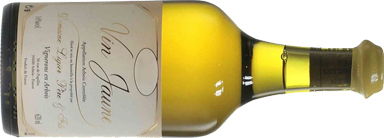
Finally, for dessert, consider Ligier’s Vin de Paille. The reference to straw (paille) comes from the drying process that precedes fermentation. At the harvest, Savagnin, Chardonnay and Poulsard grapes are spread out on beds of straw to dry for several months. In January of February, they are pressed gently and the very concentrated juice begins a leisurely fermentation, which stops before all the sugar is consumed, leaving a naturally sweet wine. The elevage is three years, followed by bottling in half-bottles. The resulting wine has an alcohol level around 15% and shows lovely notes of fruit confit (oranges and apricots), beeswax and honey. It goes well as an apéritif, with foie gras, or after a meal, either with dessert or all by itself.
LIGIER
(case prices)
Poulsard 2018: $175
Trousseau 2017: $195
Arbois “1001 Nuits” 2016: $275
Vin de Paille 2014: $425
Vin Jaune 2012: $595
